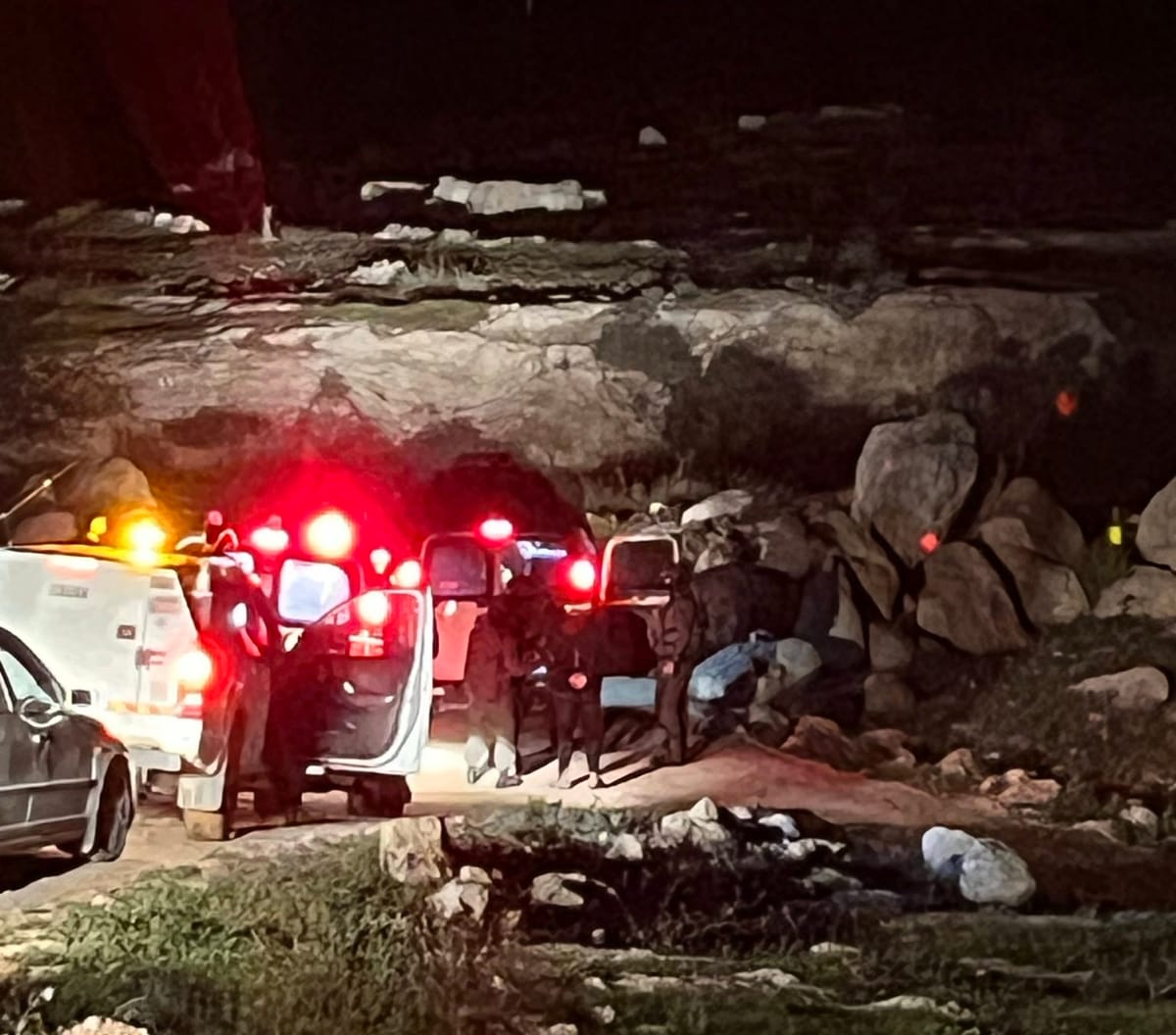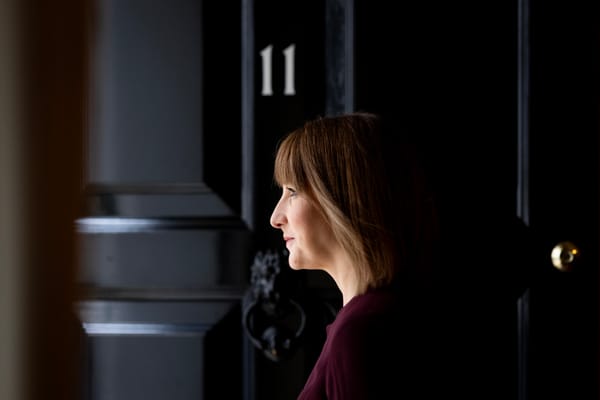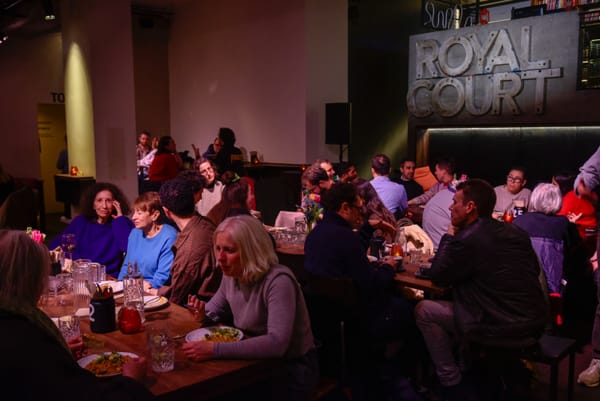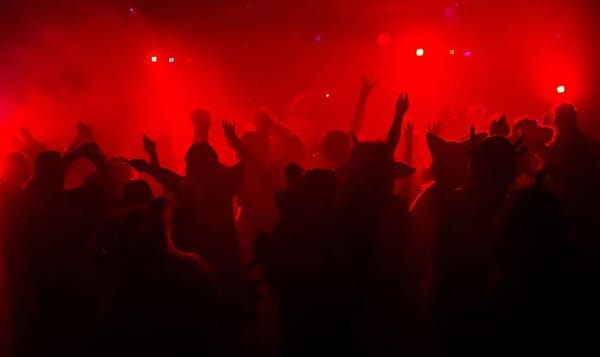"An act of deeply structural state violence"
An interview with Hineinu activist Raviv Rose.

I am sitting with my friend and fellow solidarity activist Raviv Rose in the village of Umm al-Khair, Masafer Yatta, at more or less the same time as last week, when we had sat and chatted about nothing in particular, an hour or so before the sun had gone down, and the daily fast been broken. The clocks have since changed, and Ramadan come to an end, but from the quality of light I can tell that it must have been just about now that everything was about to unfold. It is difficult not to notice that Raviv is wearing the same pair of beige corduroys as they were wearing this time last week, the ones that appear in horrifying footage of the pogrom that took place in Susiya, the village ten minutes down the road, however long it was after we had sat here and spoken about something or other.
In the footage, now published across all major international news outlets, a mob of armed settlers appears, and starts threatening and shoving the group of five activists, before one punches Raviv in the neck. The activists, all participants of the Center for Jewish Nonviolence’s three-month solidarity programme, Hineinu, scramble back into their car as the settlers start hurling rocks at them, shattering the windows and windshields. The same group of settlers had just attacked local Palestinian resident, activist, and Oscar-winning director Hamdan Ballal, with double and triple the force, striking him repeatedly on the head, until his blood spilled onto his own doorstep. It wasn’t long before the Israeli military joined in on the violence, shooting pistols in the air and then blindfolding and arresting Ballal along with two other residents of Susiya, Nasser Shreiteh and Khaled Shinran.
Raviv has spent much of the past week on the phone to journalists, relaying summaries of the attack – and how Israeli police failed to prevent or intervene on it despite ample opportunity. Joseph, another activist present in the car, took to honking the horn in an attempt to alert the myriad security vehicles that had surrounded Susiya to the threat of approaching settlers – only to receive the silent treatment.
When the police did eventually acknowledge that the activists’ car had been completely destroyed, Raviv described the group being treated “like suspects” rather than victims of a physical assault. The most that the police advised was to file a complaint at the station sometime soon.
When the group subsequently did so two days later, they were immediately met with ridicule and questioned why they hadn't filed the complaint in the field. And upon trying to provide photo evidence of one of the settlers involved in the attack, the police officer shook his head, saying, “I don't need this, I know this kid well.”
For Raviv, the police’s inaction forms a crucial part of the story, operating in full coordination with the violent acts of the settlers and army. “What took place in Susiya that night was an act of deeply structural state violence”, they took pains to emphasise to each journalist. Nonetheless, Raviv found article after article painting the attack as a fluke incident perpetrated by a few obscure individuals: “just some crazy settlers, or whatever.”
Nobody’s talking about Jinba
While relieved by the widespread media coverage of the attack, and the spotlight it was putting on Masafer Yatta, Raviv described feeling uneasy about the fact that this all appeared to boil down to Hamdan’s recent Oscar win. Indeed, the BBC, The Guardian, and The New York Times all neglected to name the simultaneous arrests of Shreiteh and Shinran – as if they were superfluous details to a convenient frontpage story.
In the week that has passed since the Susiya attack, Raviv’s doubts about the sincerity of the media’s attention have proved largely correct. Just four days later, on Friday 29 March, another bloody pogrom took place in the nearby village of Jinba. At least 15 settlers, some armed with bats, sticks, and one with an assault rifle, entered the home of the Al-Amur family, before violently attacking young and old, one by one. Five were rushed off to hospital, including a 15-year old who suffered internal bleeding in the head. 22 Palestinian residents of the village proceeded to be arrested by the army. Raviv told me that a BBC reporter who has been working with them on a long-form story on the Susiya attack hadn’t even heard of the name Jinba.
“It could have been an eye-opening moment”, said Raviv. “If the journalists who spoke to us had used the litany of activist connections they now have and had said: tell us the next time something happens and we’ll be there, and then it was just story after story after story after story – of this attack in Susiya, and this attack in Jinba, and this attack in Umm al-Kheir, and this settler in Jawaya, and this arrest wherever – and it filled up the mainstream media that had our moment of attention, the world would see that Masafer Yatta is in crisis.
“But that didn’t happen. What happened was that one bad thing happened, and people plugged in, and ambushed Hamdan, and he had 48 hours of attention, and then they left, and Masafer Yatta is now just the geotag of the attack against the Oscar guy.”
A daily routine
While reports that dig deeper into the larger context of violence in the region have since appeared, the fact that an Oscar had to be won for Masafer Yatta to merit a place in the mainstream media at all has been a source of frustration for a community that has been at breaking point for decades. “There is little sense of there being a long-term impact from this moment among Palestinians in Masafer Yatta”, Raviv notes. They touch on a strange disconnect between the shock and sensation surrounding the event in the news, and the profound weariness of people on the ground, who don’t have the luxury of nurturing one particular emotion for long. They tell me that one notorious settler involved in the attack, Bezalel Talia, has been documented harassing Palestinians in Susiya 47 times between January and last Monday. Coming face to face with settlers is a daily routine for the residents and activists. “It’s one experience to feel empathy for one brutal attack… what I think people reading the news may not comprehend is the condition of being unable to recover from one thing before the next thing happens. The constancy is its own emotional experience.”
As Raviv is speaking to me, they receive a voice note in Arabic from a man they met earlier today, while documenting settlers trespassing in the village of Addeirat, and the subsequent arrest of the man's son. The voice note asks if there has been any further information about where the boy has been taken, and Raviv has to answer no. (In situations like these, a network of activists call around to police stations, trying to identify where people are being held, and connect them with legal support. In this particular case, the boy had been arrested by the army, who refuses to provide information of detainees’ whereabouts.) They ask me if I think there’s anything else they could do right now, and it’s impossible to know what to say, but I say no.
Two years ago, when I was living in Masafer Yatta, doing what Raviv is doing, the situation was critical. But it wasn’t like this. I’m still very active on the ground, though I’m no longer there all the time. I was there in Susiya that night, though I cannot say that I was doing very much, beyond standing and waiting with people until everything had calmed down. Most of the time, it’s very hard to feel that anything is being done. When I ask Raviv whether they feel a project like Hineinu, which brings international activists to live here for a prolonged period of time, is proving to be of use in the face of all this relentless violence, they answer without blinking.
“First of all, there is the documentation: there are many examples of footage taken by activists being used as evidence during legal cases. But what’s perhaps more important is the extremely intangible sense that violence is less likely when we are present.”
They give an example from their afternoon in Addeirat. On arriving at a scene of 15 detained Palestinians, and “vehicles aplenty to have brought all of them away”, Raviv had started to assume that they were about to witness a mass arrest: exactly what they had witnessed the last time they had been called to this village.
5% less alone
“We made the decision this time round to make our presence felt, rather than hanging back and documenting from behind trees. We positioned ourselves closer to the army, forcing them to interact with us, and know that we were there.
“Is that why they only arrested one person on this occasion? Who knows. He wasn’t zip-tied or blindfolded, as had been the case with the previous arrests in Addeirat. It is completely impossible to say why that was.”
Perhaps because I’m so prone to it myself, I ask Raviv whether they ever get in their head about what it means for them to be here, and feel like packing up and crawling into a hole. They know what I’m trying to say. “We’re here because people want us here. Every single day, we receive more requests for presence than we have people to respond, and we end up being pulled in a thousand different directions”, says Raviv. “I choose not to spend time in the hypothetical. Palestinians in Masafer Yatta are going to go through this shit either way, and if they feel 5% safer, or 5% less alone, and if it means that when the shitty thing happens – and it will happen regardless – there are people standing next to them, then that’s it, I’m in.”▼
Kate Greenberg is an editor at Vashti.




